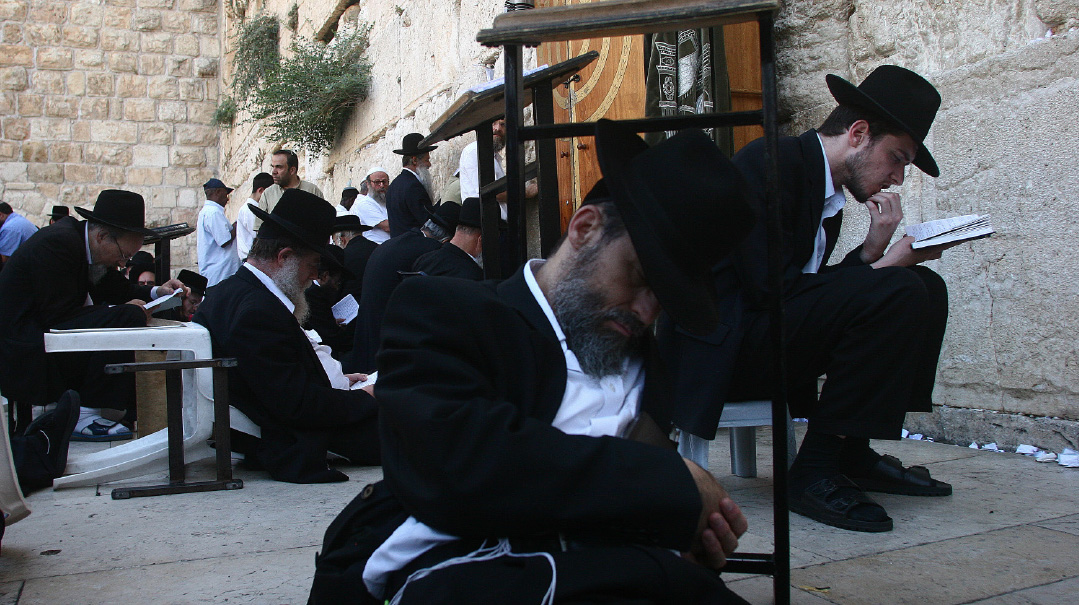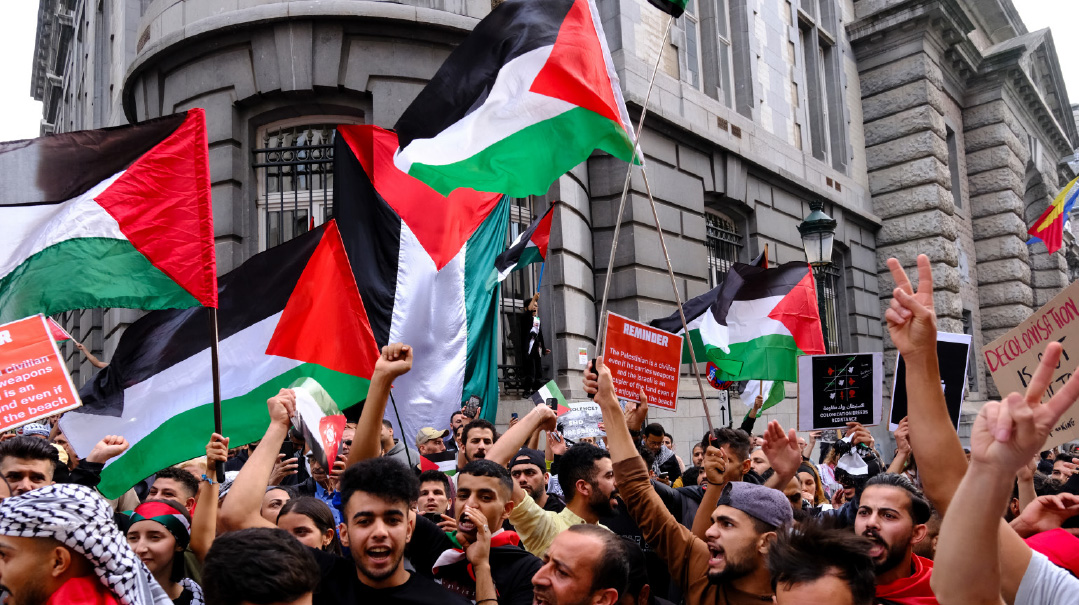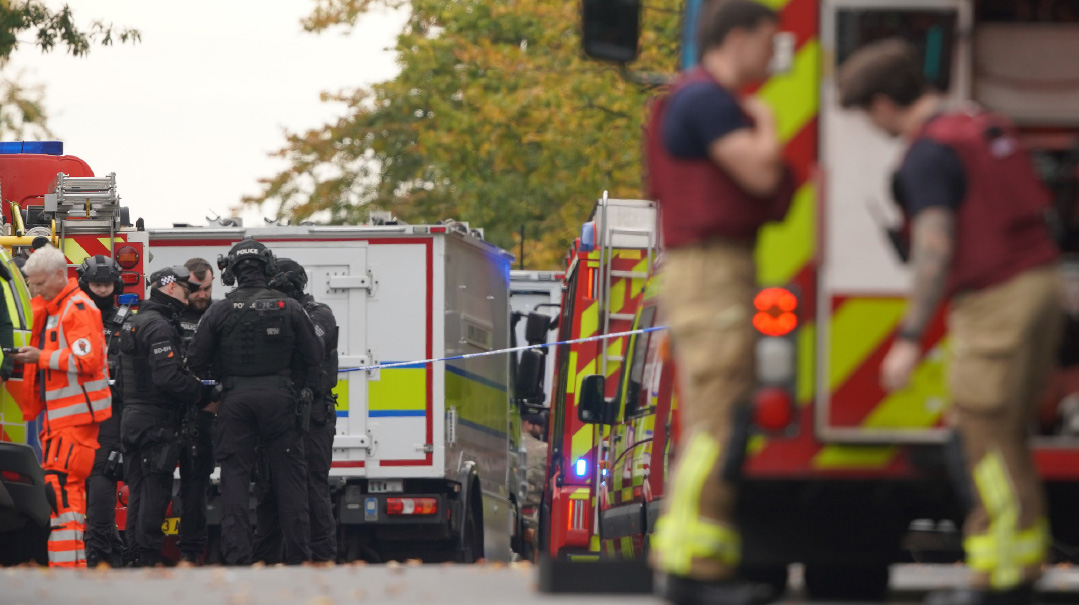Tishah B’Av Gets Real

One of the day’s major challenges — disconnect — will be greatly reduced this time around

T
his year, I suspect, Tishah B’Av will be a lot easier. Not because people will be dosed to the gills with Kali-Tzom, ginger root, or Ozempic, but because one of the day’s major challenges — disconnect — will be greatly reduced this time around.
Our generation has grown used to the reality that do what we might, the central idea of Tishah B’Av is beyond us. The most that we can hope for when it comes to the saddest day in our calendar is “wanting to want.” We all know the famous mashal of the son whose mother gives her life for him in childbirth, and who then forgets to visit his mother’s grave — a metaphor for our own inability to connect to the loss of the Beis Hamikdash. “We can’t mourn — and that itself is what have to mourn for,” is our mantra.
But wanting to want only takes you so far. And so, the day became a mixture of sadness and watch-checking. Kinnos until chatzos, post-taanis preps and on to the ubiquitous videos.
In a very sad year, that may no longer be a problem. Tishah B’Av will be more resonant because the atmosphere of the Churban seems to be all around us. In a period steeped in historic Jewish disaster, the viral reports about Iran timing an attack for Tishah B’Av are chilling. Whatever their veracity, they hammer home the fact that while other countries have wars, they don’t echo events thousands of years past. The seething inter-Jewish hatred in ancient Jerusalem plays out before our eyes in the frightening struggle between right and left in modern Israel.
There’s another parallel to that long-ago destruction: We’ve been admitted to an elite club whose last members joined 2,000 years ago. We’re the first generation in millennia to have lost Eretz Yisrael — not just in a figurative sense, but quite literally. Twice over the last two decades, we’ve had to pull out of territory that held thriving shuls and communities, leaving swaths of holy soil in Eichah-like desolation.
It started right after Tishah B’Av in 2005, when the Sharon government pulled out of the Gaza Strip, abandoning the flourishing villages and farms of Gush Katif. Back then, the political and social storm over the euphemized “Disengagement” obscured the fact that a dramatic event had taken place in Torah terms. Rav Bezalel Rakow ztz”l, then Gateshead Rav, cut through the noise: “V’lo saki es’chem ha’aretz — the Land has vomited us out, because we didn’t deserve it,” I remember him saying.
It was a strong statement that the Torah deals in fundamentals and not geopolitics, and the fact that a Jewish government had ordered the evacuation was immaterial; losing land for any reason is a fulfillment of the Torah’s warning.
Nineteen years on, the same dynamic may be at work. Under relentless fire from Hezbollah, the IDF has pulled inhabitants out of a deep swath of northern Israel. Border villages are destroyed, and the region’s tourism-based economy is devastated. The Galil — land of Tannaim and Amoraim — lies desolate, with the mekomos hakedoshim bereft of the normal crowds. Normally heaving with summer traffic at this time of year, the empty roads recall Yirmiyahu’s lament: “Darkei Tzion aveilos — the roads of Zion are bereaved.”
Let’s not fool ourselves: Despite ten months of airstrikes on the terrorists, Hezbollah isn’t going anywhere. As I write, Israel has been holding its breath for days, steeling itself for the expected Iranian response to the humiliating assassinations in Beirut and Tehran last week. The impossible situation highlights the fact that while Israel can land painful blows, the underlying dynamic hasn’t shifted: Iran’s ring of steel continues to tighten. Short of a massive war to defang Hezbollah — a conflict that the government is doing everything in its power to stave off — there’s currently no way to safely bring back the tens of thousands of evacuated residents. So instead of the buffer zone in South Lebanon that once kept northern Israel missile free, the security zone lies inside Israel itself.
Whatever elements of Israel’s right-wing say, it’s safe to say that no new Jewish homes will be built in Gaza anytime soon. And although Israel as a society will eventually steel itself for the task of retaking the north, in the meanwhile the return of residents to the Galil feels like a distant dream. Ignore the background noise about strategy and deterrence, and focus on the bottom line. Is there any other way to read the situation? For the second time in a generation, we’ve been deemed unworthy of parts of this holy land.
All of which means that this Tishah B’Av has the potential to be different. Wanting to want is over; now is the real thing. “We are deeply ashamed because we’ve abandoned the land,” says the ninth chapter of Eichah. Having lost — even temporarily — parts of Eretz Yisrael that we never dreamed would be off-limits again, that lament seems all too real.
The guilty secret of our Tishah B’Av has always been that when the kinnos were folded away, we were actually very comfortable, thank you very much. Our communities had shuls and yeshivos, wealth, ties with leading politicians — the works. Who needed more?
How much things have changed this year. Does anyone still think that there’s a long-term future in places where half of society views Jews as brutal war-mongers? Is anyone deluded enough to think that a crumbling, ideologically exhausted wider culture has anything to offer us?
Today, we don’t need to be on the lofty plane of our grandparents to mourn Yerushalayim, and in that there’s a measure of comfort. When the tears are authentic tears, when we no longer have to mourn our lack of mourning, when we can really connect to Tishah B’Av — there’s hope that the next stage is closer.
(Originally featured in Mishpacha, Issue 1023)
Oops! We could not locate your form.







